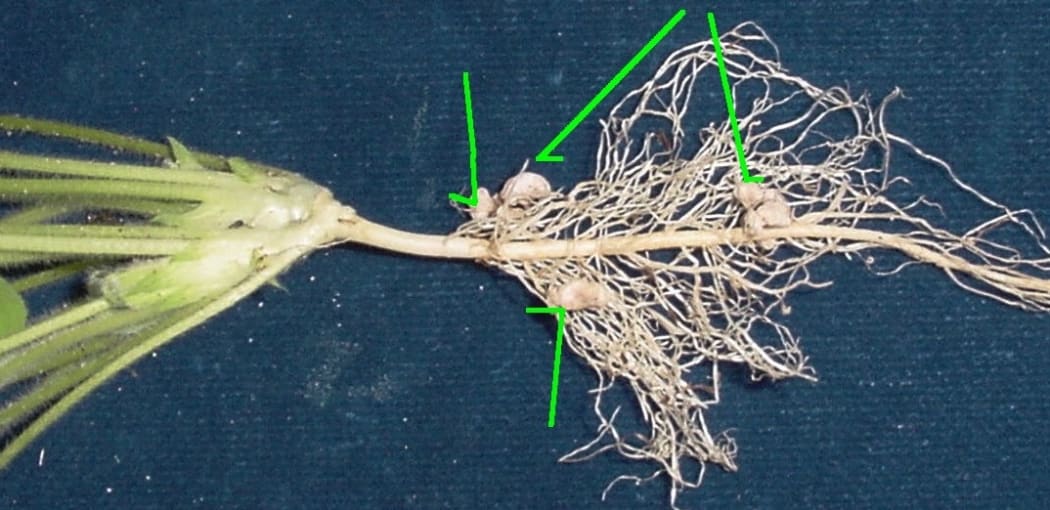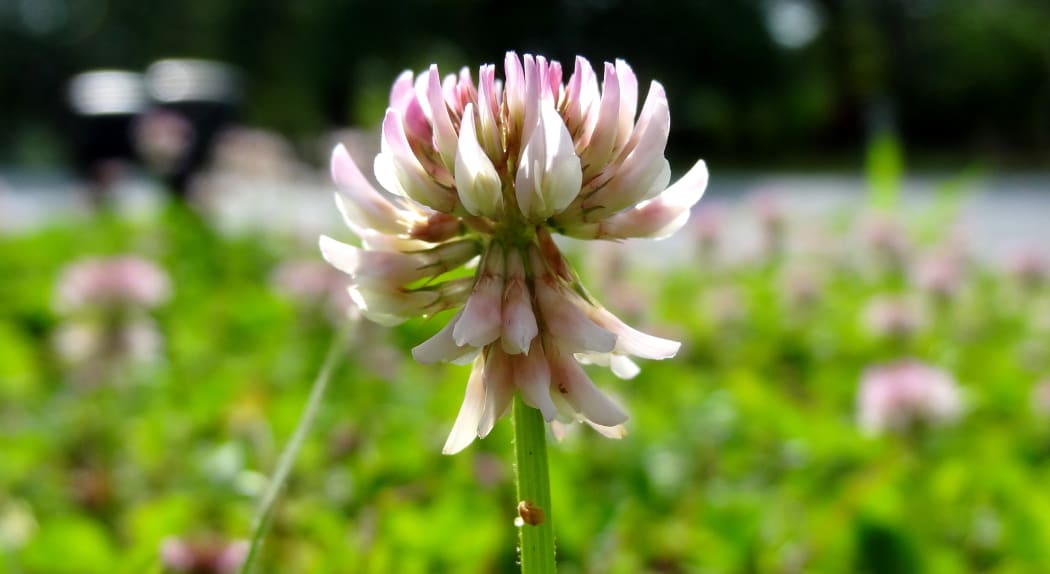Clover, gorse, pea and beans, and other kinds of legume share an amazing characteristic – the ability to ‘fix’ nitrogen from the air.
But actually, that clever trick of converting nitrogen into a form that is useable by plants is done not by the plants themselves, but by specialised bacteria that live in lumpy nodules on the plants’ roots.

Specialised bacteria that live in lumpy nodules on clover roots help the plant fix nitrogen from the air. Photo: CC BY-NC-ND 2.0 AgriLife Today / Flickr
Professor Clive Ronson, from the Department of Microbiology and Immunology at the University of Otago, carries out research into clover and he says that these soil bacteria are known as rhizobia.
Different species of rhizobia have a “very specific symbiotic” association with particular plants.
“A particular legume like clover will only form an association with a particular type of rhizobia,” says Prof Ronson. “There’s a very wide range of rhizobia and each of them is specific for a particular legume plant. And somehow the rhizobia and plants need to recognise that they’re the right ones for each other.”
Prof Ronson says it’s crucial that a plant only accepts the right form of bacteria, as many of the other types could cause disease or even kill the plant.
This recognition happens through molecular communication, which is basically the plant and bacteria talking to one another.
The first step in the process is well-known.
“The plant leaks from its roots a chemical compound called a flavonoid that signals just to the right rhizobia that ‘hey I’m here and looking to form a nodule with you’.” Prof Ronson says that the bacteria answers with another chemical signal, and the plant then begins the process of creating root nodules.

Clover underpins New Zealand farming. Photo: CC BY-NC 2.0 Martin LaBar / Flickr
The dress code
Recent research by Prof Ronson and an international team of collaborators has revealed a second, important step in this process.
“The plant has to go ‘well you’re the good guy but I don’t want some bad guy sneaking in with you’. And what we found is that there are substances on the surface of the bacteria called polysaccharides. The plant recognises these and goes ‘yep you’ve got the right coat on, you’ve got the right dress code, you can come in’.” Equally, it can exclude bacteria with the wrong dress code.
Prof Ronson says that the international team of researchers showed that the plant has a receptor, which is a molecule on its surface that can recognise the exopolysaccharides.
“Our discovery was the first receptor in any system that can recognise these polysaccharides,” says Prof Ronson, and he suspects that similar systems are probably at work in many other organisms, including animals.
Improving the system for better farming
Prof Ronson is part of a research group that includes Agresearch and is funded by the Ministry for Business, Innovation and Employment, which is trying to improve New Zealand pastures.
“We’re trying to find the best possible rhizobia and give them the best chance to form [clover] root nodules in competition with all the other bacteria.”
“It’s a very competitive world out there,” says Prof Ronson. “There are millions of these bacteria in every gram of soil, so when we try and add the best ones they have a hard job competing for that nodule formation.”
He says they are essentially looking for bacteria with the best dress code, to give them the best chance of being recognised by the plant. The idea is to coat clover seed with these rhizobia so that when it is planted it has a ready-made source of bacteria close at hand.
Interestingly, New Zealand soils are now rich in potential clover rhizobia, but that wasn’t the case until clover was introduced as a pasture plant. Prof Ronson suspects that early on the bacteria hitched a ride here, either on early seed imports or in soil on plant roots.
He says that the association between the soil bacteria and legumes was recognised thousands of years ago, and that early Romans knew to take soil with them when they were planning to grow crops such as peas in a new location.


